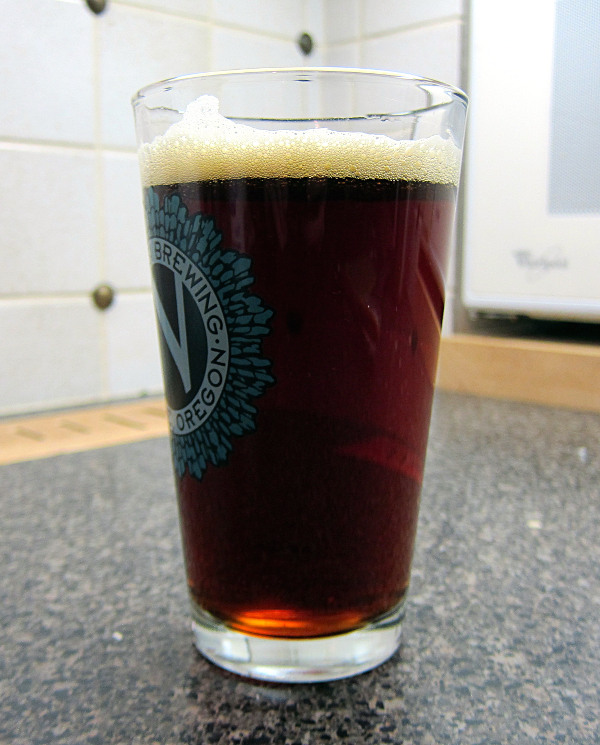Earlier this year we brewed a Bock as our first attempt at a lager. If you don’t remember, we split the batch and pitched half with US-05 to create an American Amber ale. Today we’re going to taste that.

Appearance: this brew was actually kegged and carbonated in late January, so it’s long-since crystal clear. Color is a spot-on reddish-amber. Pours with a nice foamy head, not too dense, which gradually falls back. Some lacing is present, but not as much as our Rye IPA.
Smell: all spice, no fruit, but not overpowering. This is expected due to the use of “noble” Saaz and Hallertau hops which tend to have a spicy character. Since this batch was not drop-hopped, no aroma explodes out of the glass like you’d get with an American IPA.
Taste: good taste, great bitterness for the style, and very easy drinking. Spicy notes from the hops, no overpowering caramel flavors or cloying sweetness from the extra crystal we tossed in. We think it’s well-balanced towards the bitter side.
Mouthfeel: there’s room for improvement here. The brew finished at 1.024 SG, likely due to the higher mash temperature. Next time, we’d keep the mash temps around 150 – 151F for less body.
Temperature Zones
A HERMS system (like we have) has multiple temperature zones. First you’ve got the mash tun itself, and second you have the Heat EXchanger (HEX) in your Hot Liquor Tank. They are not always the same temperature, and that means that both zones can affect the fermentability and mouthfeel of your beer.
If you’ll recall, mashing at a lower temperature (like 148F) increases fermentability because it favors the beta-amylase enzyme, which breaks starches into simpler sugars that yeast convert to alcohol. Higher mash temperatures (like 154F) favor alpha-amylase, which breaks starches into larger chunks that yeast cannot process as easily. Thus, higher mash temperature yields a less fermentable wort, and more unfermentable sugars, which create a fuller-tasting beer.
So, if your mash tun is at 149F and your HEX coil is at 154F, you’ll be getting starch conversion in both places, but quite possibly favoring different enzymes. You need to keep the temperature between the mash and the HEX as close as possible to ensure the mash profile is consistent. This is how we got more mouthfeel and less ABV on this brew without intending to.
For the future brews, we’ll try to hit mash temps more precisely, and reduce flow rates through the HEX to ensure that the wort in the coils isn’t a higher temperature than the mash itself.
